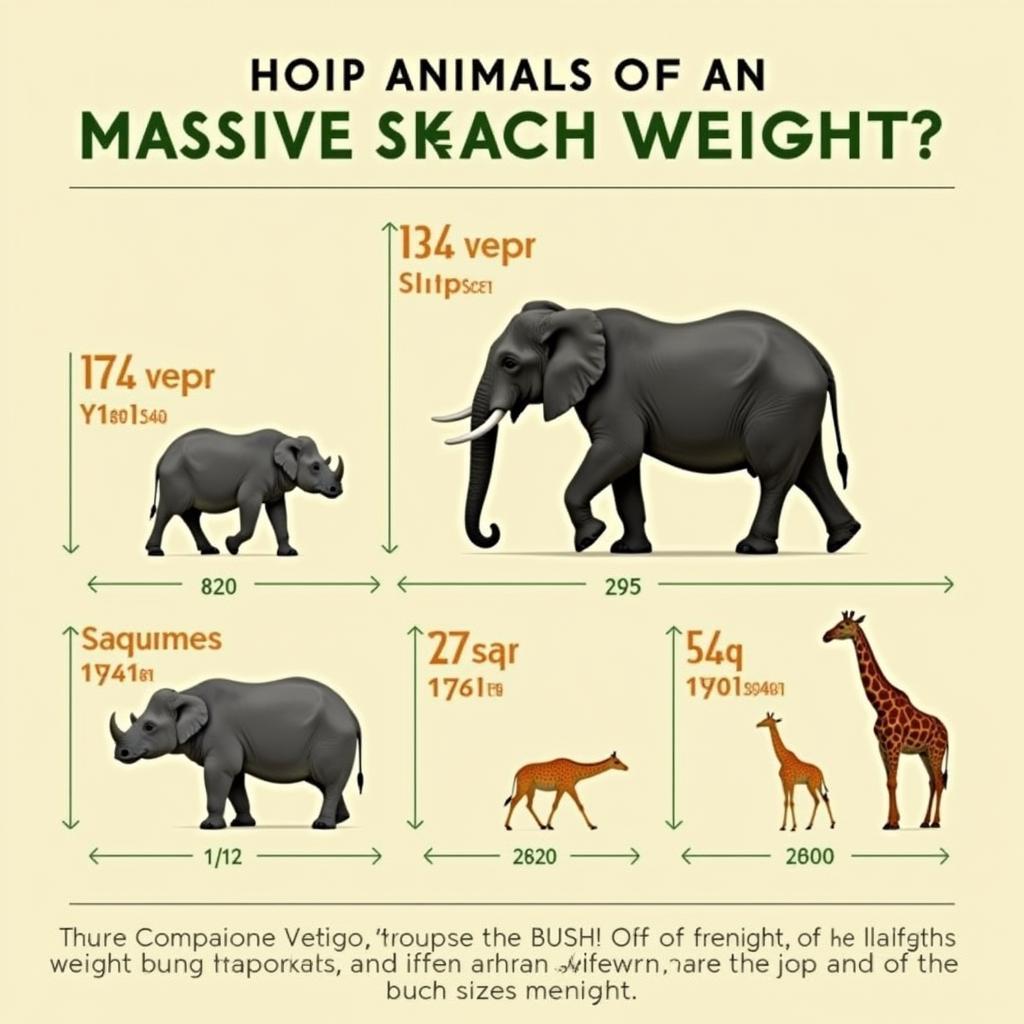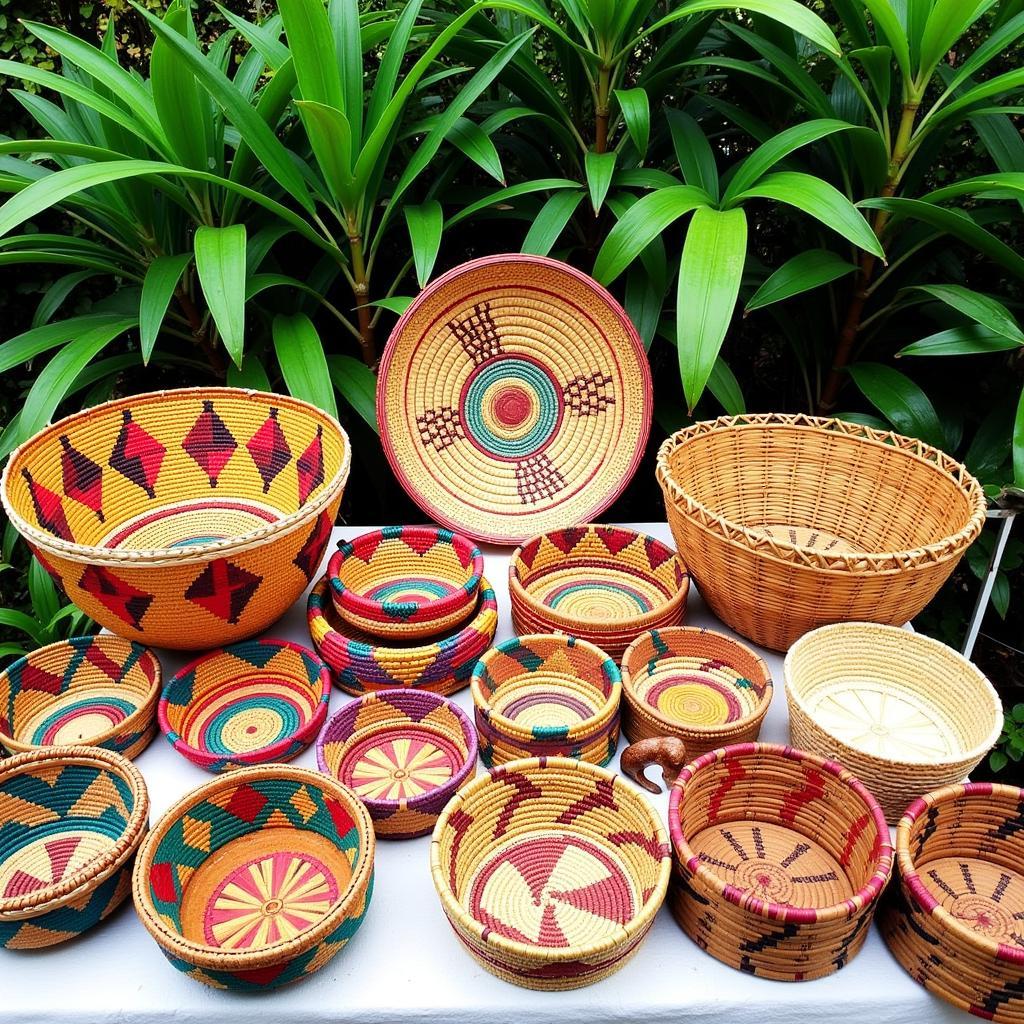A Journey Through African Eating Utensils: From Everyday Objects to Cultural Treasures
Africa is a continent of vibrant cultures and traditions, and its dining customs are no exception. While forks, knives, and spoons are common in many parts of the world, African Eating Utensils offer a unique and fascinating window into the diverse culinary practices and history of the continent. This article will delve into the captivating world of African eating utensils, exploring their diverse forms, materials, and cultural significance.
The Evolution of Eating Utensils in Africa
The history of African eating utensils is as rich and diverse as the continent itself. Archaeological evidence suggests that early humans used simple tools, like stones and animal bones, for eating purposes. Over time, these tools evolved into more refined utensils, reflecting the development of agricultural practices and culinary traditions.
The Rise of Hand-Held Utensils
In many parts of Africa, hands remain the primary eating utensils. This practice, known as “eating with one’s hands,” is deeply ingrained in cultural traditions and often viewed as a sign of respect and connection to food. The act of eating with one’s hands is not merely functional but also a sensory experience, allowing individuals to savor the flavors and textures of their meals.
Exploring the Diversity of African Eating Utensils
Across the African continent, there exists an incredible array of specialized eating utensils, each with its unique purpose and cultural significance.
The Versatile Spoon: A Culinary Staple
Spoons, made from various materials like wood, metal, or horn, are widely used in Africa. They come in various shapes and sizes, often reflecting the specific needs of different communities and dishes. For example, the “Mbole” spoon, a wooden spoon commonly used in the Congo Basin, features a deep bowl and a long handle, ideal for scooping thick stews and soups.
The Multi-Purpose Knife: More Than Just Cutting
Knives, another ubiquitous utensil in Africa, play a crucial role in both food preparation and consumption. They can be used for cutting, slicing, carving, and even serving. In many communities, knives are not just tools but also symbols of status, power, and even masculinity.
The Unique “Nyama Choma” Stick: A Grilling Masterpiece
In East Africa, the “Nyama Choma” stick, a long wooden skewer, is indispensable for grilling meat over an open fire. This method of cooking, known as “Nyama Choma,” is a popular social event and a symbol of African hospitality.
The Cultural Significance of African Eating Utensils
Beyond their functional purpose, African eating utensils hold profound cultural significance, reflecting shared values, beliefs, and traditions.
Shared Meals, Shared Traditions
The act of sharing food is central to many African cultures. Eating together is not simply a way to nourish the body but also a powerful means of building relationships, fostering community, and expressing gratitude.
Utensils as Heirlooms and Symbols of Identity
In many African communities, eating utensils are passed down through generations, becoming cherished heirlooms and symbols of family history and cultural heritage. These objects often embody the values, skills, and artistry of previous generations.
Embracing the Diversity of African Cuisine
The unique world of African eating utensils provides a fascinating glimpse into the rich culinary traditions and cultural practices of the continent. As you explore the diverse flavors and culinary techniques of Africa, remember the role that utensils play in shaping the dining experiences of its people.
Conclusion
African eating utensils are more than just tools; they are a reflection of the continent’s rich history, diverse cultures, and vibrant culinary traditions. From the hands that bring food to the mouth to the specialized implements that embody generations of culinary artistry, the world of African eating utensils is a testament to the ingenuity and cultural richness of this remarkable continent.
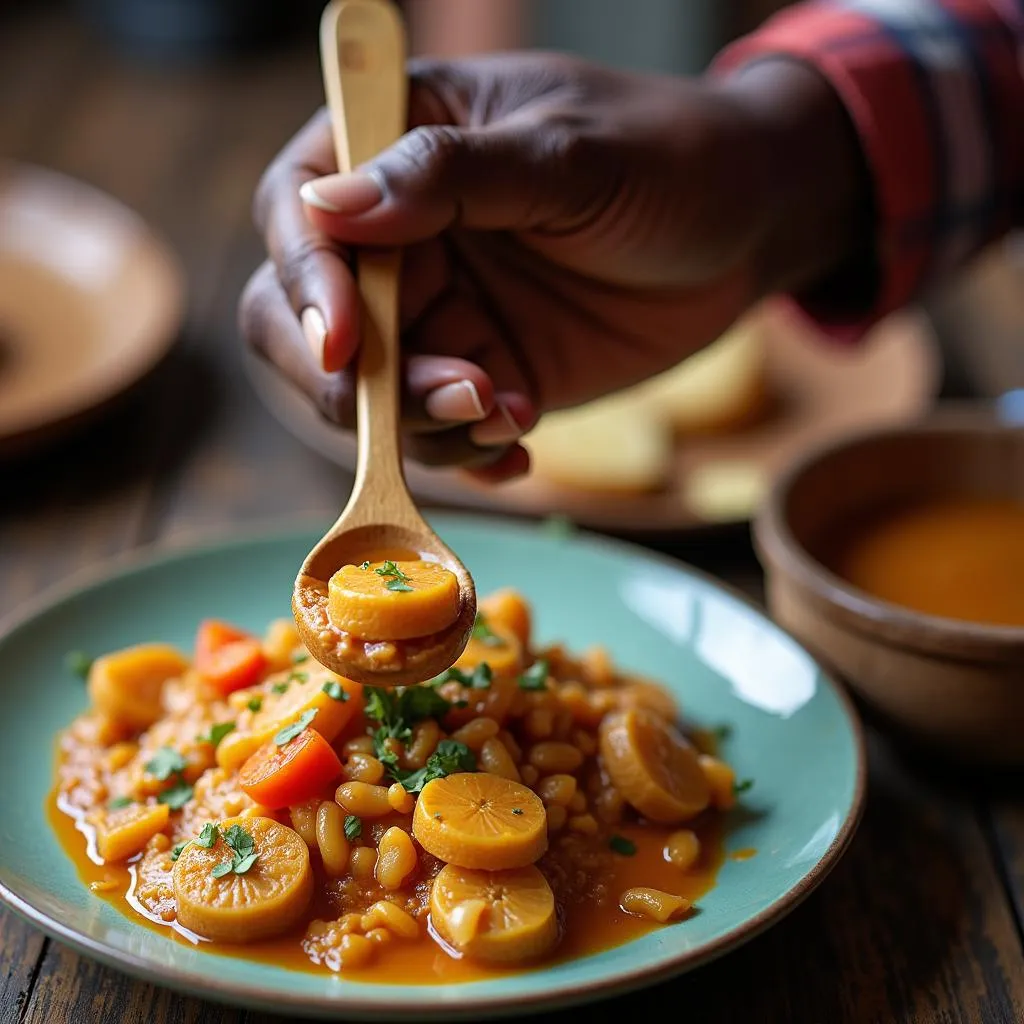 African woman using a wooden spoon to eat a traditional meal
African woman using a wooden spoon to eat a traditional meal
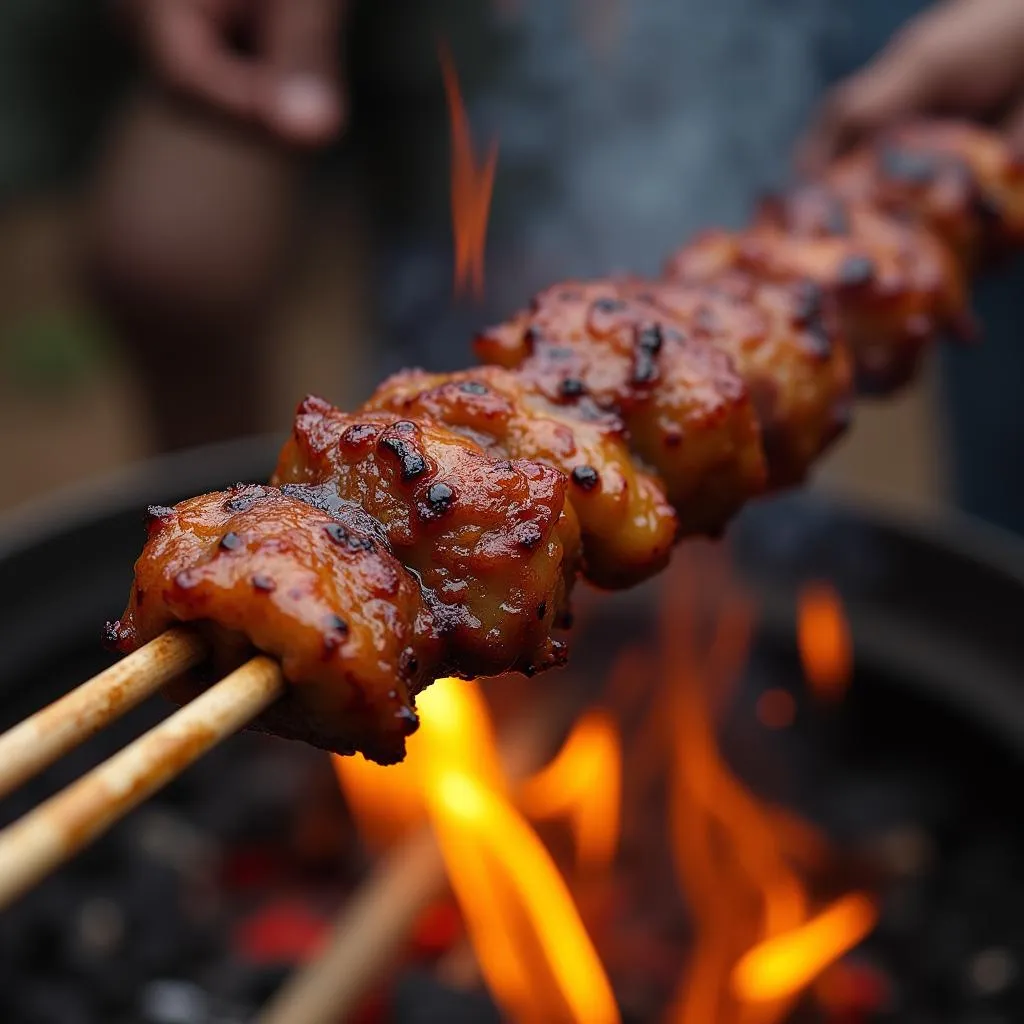 Close-up of a Nyama Choma stick with grilled meat
Close-up of a Nyama Choma stick with grilled meat
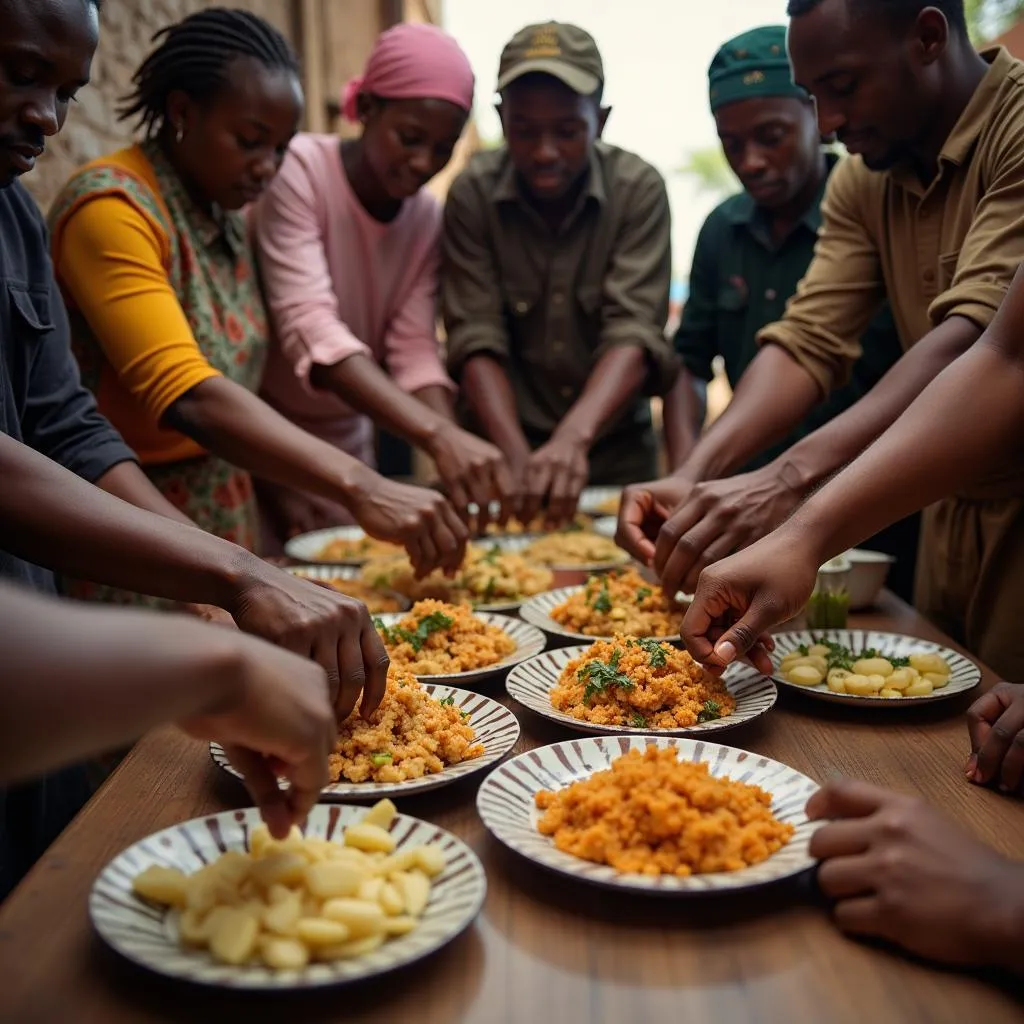 Group of people sharing a meal using their hands
Group of people sharing a meal using their hands
Frequently Asked Questions (FAQs)
Q: What are the most common types of African eating utensils?
A: The most common types of African eating utensils include hands, spoons, knives, and specialized tools like the “Nyama Choma” stick.
Q: What materials are African eating utensils typically made of?
A: African eating utensils can be made from various materials, including wood, metal, bone, horn, and even clay.
Q: What is the cultural significance of eating with one’s hands?
A: Eating with one’s hands is often seen as a sign of respect, connection to food, and cultural heritage in many African societies.
Q: How do eating utensils differ across the African continent?
A: Eating utensils vary significantly across Africa, reflecting the unique culinary traditions and practices of different communities.
Q: Are there any specific utensils used for certain types of dishes?
A: Yes, many African cultures have specialized utensils for particular dishes. For example, the “Mbole” spoon is ideal for scooping thick stews and soups, while the “Nyama Choma” stick is perfect for grilling meat.


